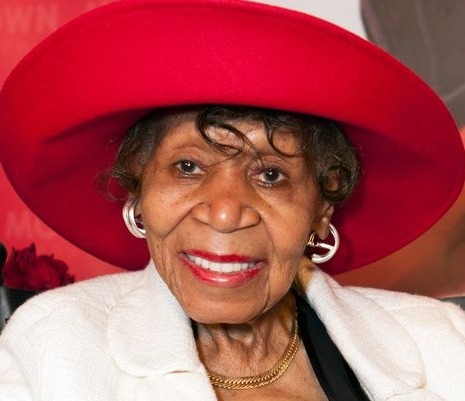
For five years the gracious Maxine Powell ran the only in-house finishing school at any American record label. Most people have probably never heard of Powell, who died this week, but music fans have unknowingly enjoyed her handiwork at Motown since the ‘60s.
As Mrs. Powell explained:
When I opened up, in 1964, the finishing school, the purpose was to help the artists become class, to know what to do on stage and off stage, because they did come from humble beginnings. Some of them from the projects and some of them were using street language. Some were rude and crude, you understand, but with me, it’s not where you come from, it’s where you’re going.
The petite former actress, model, manicurist, cosmetologist, and African-American finishing school-modeling agency founder was hired by Motown to help the label polish its artists’ public images. She met Berry Gordy through his sister, who was one of Powell’s models, and his mother, who took one of Powell’s self-development courses. Her official title was “artist development,” but her duties were broader than that.
It was Powell’s job to teach the likes of Stevie Wonder, The Supremes, Marvin Gaye, The Four Tops, Martha Reeves, Tammi Terrell, The Marvelettes, The Velvelettes, and Smokey Robinson how to present themselves charmingly during interviews, performances, and off-stage public appearances. When they were in Detroit, Motown singers were required to attend two-hour session with Powell, learning public speaking, posture, walking, stage presence, etiquette, and personal grooming. Powell had studied African-American cosmetology at the renowned Madam C.J. Walker training school in Indianapolis.
Powell toured with artists on occasion, acting as counselor and unofficial bartender after shows. One of her mottos was “I teach class, and class will turn the heads of kings and queens.” She meant that literally. She wanted Motown’s artists to be able to comport themselves appropriately if they were ever invited to the White House or Buckingham Palace.
Perhaps more immediately useful was the instruction on how to sit in a limousine or on a stool (in a bar or on a talk who) in a short dress. Trying to act in a “ladylike” fashion is, let’s face it, like aiming at a constantly moving target. Even Diana Ross rejected the idea that shorter false eyelashes were classier than long, spidery ones.
Unlike Sharon Osbourne’s, Mo’Nique’s, and Ricki Lake’s Charm School candidates on VH-1, Powell’s students avidly listened to her and didn’t argue.
Martha Reeves of Martha and the Vandellas, told The New York Times, “Mrs. Powell was always a lady of grace, elegance and style, and we did our best to emulate her. I don’t think I would have been successful at all without her training.”
Although Powell left Motown in 1969 she left a lasting impression on the artists she had helped. For example, prior to a national TV appearance she counseled The Supremes to dance with their knees, not their buttocks (“Do not protrude the buttocks” was one of her maxims). “You’re not out on the streets here,” she advised them.
Powell’s memorial service and funeral are taking place in Detroit today.

Below, Maxine Powell on her approach to teaching “class” and how she motivated her students:





